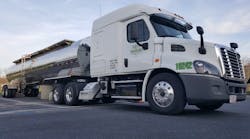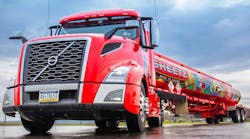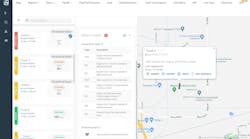BAE Systems is developing a parallel hybrid propulsion system designed for medium- and heavy-duty truck applications. The parallel system is the latest version of the company's HybriDrive green propulsion system.
The HybriDrive series propulsion system — currently in service on more than 3,000 transit buses in cities around the world — meets the demands of urban transit duty cycles, which require low average speeds and frequent stop-and-go operation. The HybriDrive parallel system is designed to address the needs of vehicles with duty cycles that require higher operating speeds and less frequent stops.
With more than 200 million miles of revenue service, more than 10 million gallons of diesel fuel saved, and more than 100,000 tons of carbon dioxide emissions prevented, the HybriDrive series has proven itself to be an efficient hybrid system for the transit bus sector and has provided significant environmental benefits.
Series and parallel technologies both use simplified and proven components and controls. While the series system does not use a transmission, the HybriDrive parallel system is based on a single electric machine integrated between the engine and transmission. The system can be installed with minimal impact to the vehicle, and enhances propulsion through an optimized blending of internal combustion engine power and electric power. The system's energy management and control capabilities ensure all energy flow — such as propulsion and regeneration — occurs efficiently.
HybriDrive has transported more than a billion passengers in cities across North America and in the United Kingdom. It powers vehicles by bus manufacturers including Daimler and New Flyer in the United States and Alexander Dennis and Irisbus Iveco in Europe.
The HybriDrive parallel system, in final stages of development, will see it first road trials next spring and is expected to be deployed in markets around the world in 2012.








